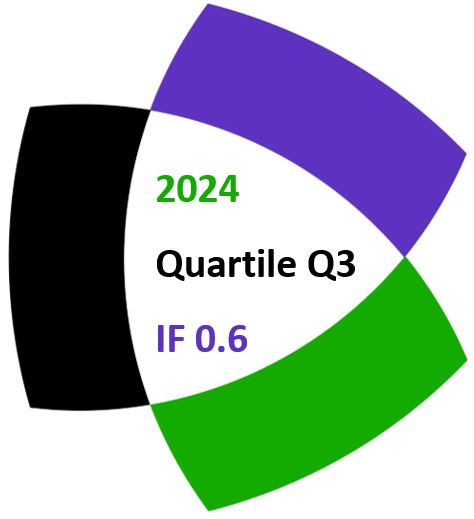Safia Aoudjit, Djamel Berkane and Pierre Dusart
Notes on Number Theory and Discrete Mathematics
Print ISSN 1310–5132, Online ISSN 2367–8275
Volume 27, 2021, Number 4, Pages 15–24
DOI: 10.7546/nntdm.2021.27.4.15-24
Full paper (PDF, 268 Kb)
Details
Authors and affiliations
Safia Aoudjit ![]()
LAMDA-RO Laboratory, Department of Mathematics, University of Blida1
Po. Box 270 Route de Soumaa, Blida, Algeria
Djamel Berkane ![]()
LAMDA-RO Laboratory, Department of Mathematics, University of Blida1
Po. Box 270 Route de Soumaa, Blida, Algeria
Pierre Dusart ![]()
Faculté des sciences et techniques, Université de Limoges
P.O. Box 123, avenue Albert Thomas 87060 Limoges Cedex, France
Abstract
Robin’s criterion says that the Riemann Hypothesis is equivalent to
![]()
where ![]() is the sum of the divisors of
is the sum of the divisors of ![]() ,
, ![]() represents the Euler–Mascheroni constant, and
represents the Euler–Mascheroni constant, and ![]() denotes the
denotes the ![]() -fold iterated logarithm. In this note we get the following better effective estimates:
-fold iterated logarithm. In this note we get the following better effective estimates:
![]()
The idea employed will lead us to a possible new reformulation of the Riemann Hypothesis in terms of arithmetic functions.
Keywords
- Primorial number
- Robin’s inequality
Riemann Hypothesis
2020 Mathematics Subject Classification
- 11A25
- 11N64
- 11M26
References
- Akbary, A., & Francis, F. J. (2020). Euler’s function on products of primes in a fixed arithmetic progression. Mathematics of Computation, 89(322), 993–1026.
- Akbary, A., & Friggstad, Z. (2009). Superabundant numbers and the Riemann Hypothesis. American Mathematical Monthly, 116(3), 273–275.
- Aoudjit, S., Berkane, D., & Dusart, P. (2021). Explicit estimates involving the primorial integers and applications. Journal of Integer Sequences, 24(7), Article 21.7.8.
- Balazard, M. (1990). Unimodalite de la distribution du nombre de diviseurs premiers d’un entier. Annales de l’Institut Fourier, 2, 255–270.
- Briggs, K. (2006). Abundant numbers and the Riemann Hypothesis. Experimental Mathematics, 15 (2), 251–256.
- Caveney, G., Nicolas, J. L., & Sondow, J. (2011). Robin’s theorem, primes, and a new elementary reformulation of the Riemann Hypothesis. Integers, 11(6), 753–763.
- Dusart, P. (2018). Estimates of the k-th prime under the Riemann hypothesis. The Ramanujan Journal, 47(1), 141–154.
- Gronwall, T. H. (1913). Some asymptotic expressions in the theory of numbers. Transactions of the American Mathematical Society, 14, 113–122.
- Hardy, G. H., & Wright, E. M. (1960). An Introduction to the Theory of Numbers. 4th ed. Oxford University Press.
- Lagarias, J. C. (2002). An Elementary Problem Equivalent to the Riemann Hypothesis. American Mathematical Monthly, 109, 534–543.
- Nicolas, J. L. (1983). Petites valeurs de la fonction d’Euler. Journal of Number Theory, 17, 375–388.
- Robin, G. (1983). Estimation de la fonction de Tchebychef θ sur le kieme nombre premier et grande valeurs de la fonction ω(n) nombre de diviseurs premiers de n. Acta Arithmetica, 42, 367–389.
- Robin, G. (1984). Grandes valeurs de la fonction somme des diviseurs et hypothese de Riemann. Journal de Mathematiques Pures et Appliqu ees. Neuvieme Serie, 63, 187–213.
- Rosser, J. B., & Schoenfeld, L. (1962). Approximate formula for the some functions of Prime Numbers. Illinois Journal of Mathematics, 6, 64–94.
- Sloane, N. J. A. A004490. The On-Line Encyclopedia of Integer Sequences. Available online at: https://oeis.org/A004490.
Related papers
Cite this paper
Aoudjit, S., Berkane. D., & Dusart, P. (2021). On Robin’s criterion for the Riemann Hypothesis. Notes on Number Theory and Discrete Mathematics, 27(4), 15-24, DOI: 10.7546/nntdm.2021.27.4.15-24.


